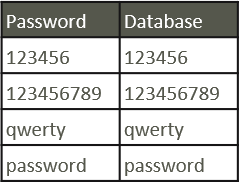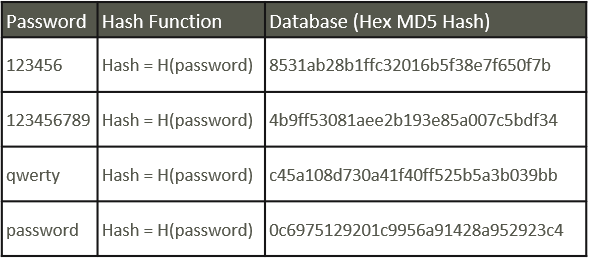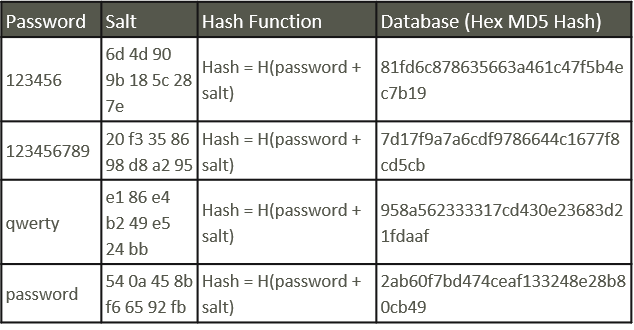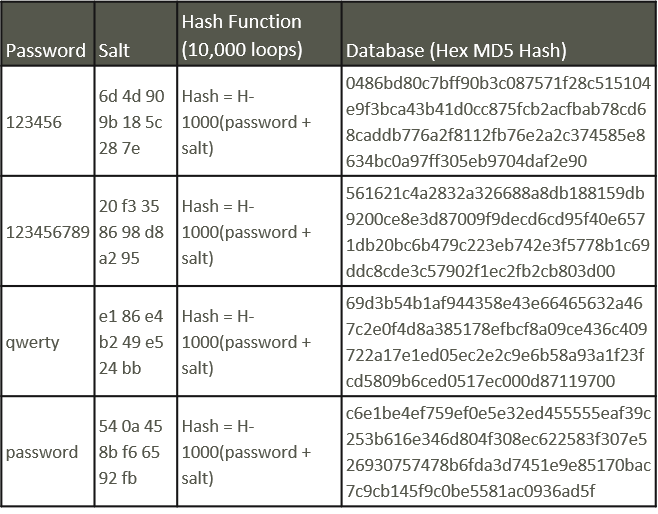Password security is important. Salting and stretching a password are two ways to make passwords more secure from attackers. You can use the strategies separately or deploy them in tandem for the most security.
This article covers the logic of password protection, including salting and stretching passwords.
Database attacks
Because passwords are a user’s key to their data, they are a key target for attackers.
Popular methods of password attacks happen through brute force and rainbow attacks:
- Brute force attacks are a trial and error approach where a computer guesses until it gets it right. This may sound ineffective, but computers can try many, many times. In this era of computing, “Hashcat breaks an 8 character full coverage (a-zA-Z0-9!-=) password in 26 days on a single 1080 Nvidia GPU.”
- Rainbow attacks are another form of cracking passwords, where all possible combinations of hashed passwords are pre-computed and stored in a dictionary. Then, an attacker runs through their list of hashes to find a match. If their scan returns a match, then they have the password.
Passwords help prevent attacks
First things first: nothing online is perfectly secure. Not even computers not connected to the internet are perfectly secure. We use passwords to minimize risk of attack, not to guarantee it will never happen.
Though you cannot guarantee security, there are some ways to increase database security. Salting and stretching passwords are two such strategies:
- Salting passwords. Designing the password encryption so only one password is compromised rather than the whole database. Attackers will attack. Don’t make it easy for them to run off with the whole loot at once.
- Stretching passwords. Lengthening the password (on the database side) so the time it takes to crack the password becomes too expensive for attackers. The idea is that attackers will opt for easier targets—makes common sense, similar to the rumor that crime rates fall proportionately to how high one travels up the hills in San Francisco.

Ways to store passwords
To understand password salting and stretching, let’s look at ways companies can store their data.
It is critical to note: Responsibility does not fall on the company’s shoulders if an individual user compromises their own password. A company can encourage a user to use stronger passwords by enforcing character limits and special character sequences. A company, however, cannot control if a user allows someone walking by to see their password.
A company’s responsibility is to secure their stored passwords.
Direct password storage
Storing the password as-is is the worst possible way to store passwords in a database. If a person with no computer received the list, they can read the whole list of passwords as they are.

Simple hash function
A better, but far from perfect, option is to apply a hash function to the password and store the hash value in the database. This is an added step between the phrase the user inputs and the phase (hash) that ultimately gets stored in the database.

Here’s how it works: If an attacker were to receive or obtain the list of passwords (the right-most column, above), but the passwords are hashed, the values are unreadable. Therefore, a computer would have to figure out what function was used to turn those values into the original password.
Hashing sounds good, but it is an all-or-nothing proposition: If an attacker were to crack the hash function, then the hacker could read all the passwords in the database.
Salting a password
This is where salting comes in. A salt adds a string of characters to the user’s passwords to just before the password undergoes hashing. The salt accomplishes two things:
Attackers cannot do a dictionary lookup to see how popular passwords get hashed. Because there is a random string of values added to the password, passwords no longer exist as “popular strings” and are more random. Their complexity has increased greatly.
A unique salt per user prevents an attacker from guessing the hash function and unlocking an entire database of passwords. The added step between the password and the hash function makes it so if an attacker gets the hash function figured out, they still have to run through many more combinations to guess the unique salt value.

Stretching a password
Finally, a tried-and-true method to frustrate attackers is stretching passwords before they’re saved to the database. The primary aim of stretching a password is to make deciphering the password more costly—whether with memory, time, or money—than an attacker can afford.
In stretching, the strength of a password is measured by its bits of key strength. Methods of lengthening the number of bits a password has comes down to the hash function. Usually, hash functions are looped thousands of times, simulating randomness and adding more and more bits to the complexity of a password passed to the database.

How to stretch passwords
There are popular, well-developed tools one can use to start stretching passwords, including PBKDF2 and Bcrypt. Today, 128-bit keys are a common benchmark for effective password encryption.
For the developer, the goal of password stretching software is to increase computational time on the attacker’s system. Stretching maximizes the difficulty an attacker may have to decrypt the data, while still maintaining usability of the application itself.
When a password is encrypted, the user has to wait for their password to run through the hoops and get verified against their actual password. If it takes the user’s computer 3 minutes to hash their password and check it against the database, that might be unreasonable. But if the user’s password is submitted and verified with the database in a few milliseconds, then there could be room for improvement.
For companies, perhaps the best improvement is to limit the instances of user passwords.
Additional resources
For more on cybersecurity topics and practices, browse our BMC Security & Compliance Blog or check out these articles:
- Cybersecurity: A Beginner’s Guide
- What Is a Cyber Resilience Strategy?
- Introduction to Enterprise Security
- 5 Examples of Recent Data Breaches






